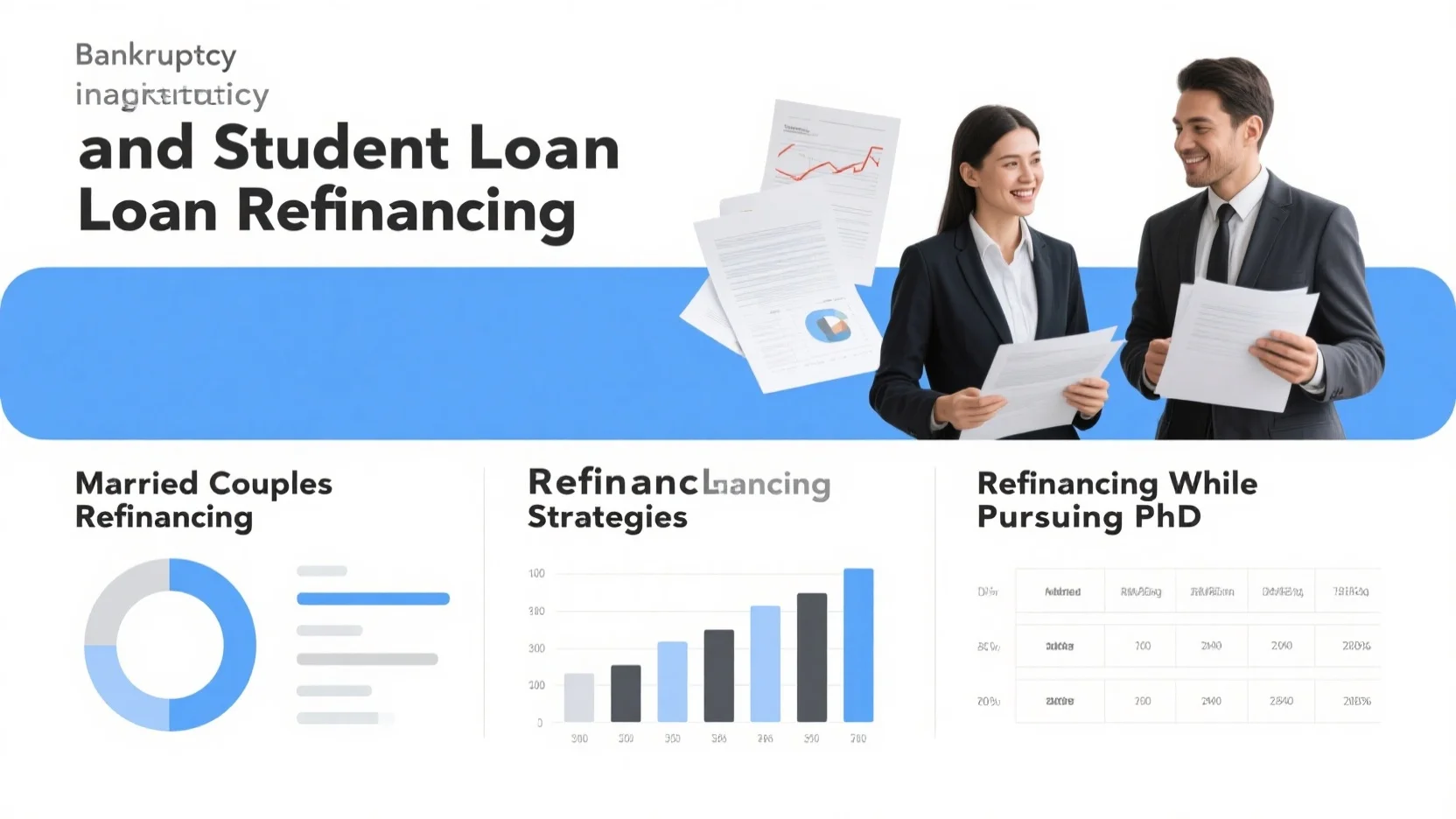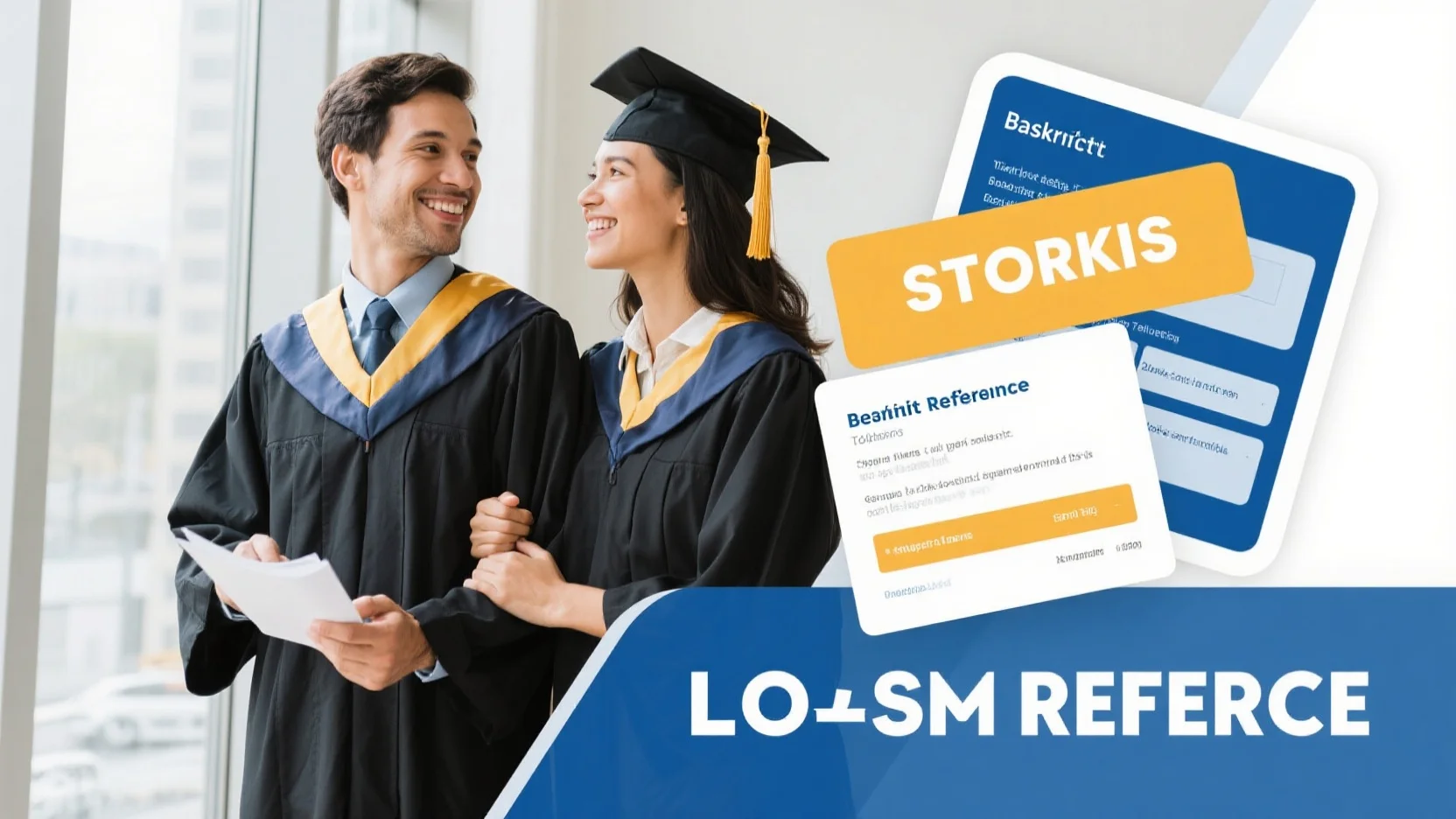:max_bytes(150000):strip_icc()/refinance.asp-FINAL-fd79f3e9eb6342eb9c922c658df1ef84.png)
Are you a PhD student, married couple, or someone with bankruptcy history looking to refinance student loans? In 2022, significant changes to student loan policies, as reported by the U.S. Department of Justice and the U.S. Department of Education, have opened new doors for debt relief. With over 40 million Americans in student debt (SEMrush 2023 Study), understanding these changes is crucial. Our buying guide offers premium strategies for your unique situation, far better than counterfeit models. Get a best price guarantee and free analysis of your refinancing options now!
General Information
Did you know that more than 40 million Americans carry student debt, and these loans are having an impact on credit scores? Understanding the ins and outs of student loan refinancing is crucial in this landscape. Here is some key general information about student loan refinancing.
Eligibility Criteria
For Regular Refinancing
Lender requirements to refinance student loans typically include a good credit score and proof of stable income. The higher your credit score, the more likely it is that you will qualify for the best interest rates when refinancing your student loan. For example, a borrower with a credit score of 750 or above will often have access to lower interest rates compared to someone with a score in the 600s.
Pro Tip: Regularly check your credit report for errors and work on improving your credit score before applying for refinancing. You can obtain a free credit report from each of the three major credit bureaus once a year (AnnualCreditReport.com).
For Those Pursuing PhD
Only 15% of students enroll in graduate programs, yet 40% of federal student loans issued each year go to financing PhD and master’s degrees—amounting to over $37 billion owed annually (SEMrush 2023 Study). Many graduate students finish school with over $100,000 borrowed in student loans. Despite the high debt, some lenders may be more lenient with PhD students as they are likely to have higher earning potential in the future. However, it’s still important to have a good plan for repayment and potentially a co – signer if your credit history is limited.
Case Study: John, a PhD student in engineering, was able to refinance his student loans with the help of a co – signer. This allowed him to secure a lower interest rate and reduced his monthly payments, making it easier for him to manage his finances while focusing on his studies.
Pro Tip: If you’re a PhD student, look for lenders that specialize in graduate student loan refinancing. They may offer better terms and understand the unique financial situations of students in advanced programs.

For Married Couples
The Department of Education’s recent actions have given some relief to married student loan borrowers. When refinancing as a couple, lenders will often consider the combined income and credit scores of both partners. This can be an advantage if one partner has a stronger credit profile. For example, if one spouse has a high credit score and a stable income, it can help the couple qualify for better interest rates.
Pro Tip: Before applying for refinancing, sit down with your spouse and review both of your credit reports. Work on improving any areas that need attention together to increase your chances of getting a favorable refinancing offer.
Impact of Bankruptcy
Student loans are treated differently from other forms of consumer debt in bankruptcy, like credit card bills or personal loans. To get a discharge in bankruptcy, borrowers must demonstrate that repaying the loans would cause an “undue hardship.” However, since the Biden administration made a policy change nearly two years ago, more student loan borrowers have successfully received debt relief through bankruptcy.
The U.S. Department of Justice issued new guidance regarding student loan bankruptcy in cooperation with the U.S. Department of Education in November of last year. This new process helps ensure transparent and consistent expectations for the discharge of student loan debt in bankruptcy, reduces the burden on debtors of pursuing such proceedings, and makes it easier for Justice Department attorneys to identify cases where discharge is appropriate.
Pro Tip: If you’re considering bankruptcy as an option for student loan relief, consult with a qualified bankruptcy attorney who specializes in student loan cases. They can guide you through the complex process and help you understand your rights.
Interest Rates
Interest rates play a crucial role in student loan refinancing. The refinanced loan will have different features than your previous student loans, including a new monthly payment, interest rate, and repayment term. When shopping for refinancing options, it’s important to compare the interest rates offered by different lenders.
As recommended by [Student Loan Hero], some top – performing solutions include looking for lenders that offer variable or fixed interest rates depending on your financial goals. Fixed interest rates provide stability as your rate won’t change over the life of the loan, while variable rates may start lower but can fluctuate.
Pro Tip: Try our student loan interest rate comparison calculator to see how different interest rates can affect your monthly payments and total loan cost.
Key Takeaways:
- Eligibility for refinancing depends on factors like credit score, income, and educational status (e.g., PhD students, married couples).
- Bankruptcy for student loans has become more accessible for some borrowers due to recent policy changes.
- Interest rates are a key factor in refinancing, and it’s important to compare offers from different lenders.
Test results may vary.
New Developments
2022 Student Loan Bankruptcy Process Changes
Explanation
Did you know that more than 40 million Americans carry student debt, and delinquencies on these loans are contributing to a nationwide dip in credit scores (SEMrush 2023 Study)? In November 2022, the U.S. Department of Justice, in close coordination with the Department of Education, instituted a new process for handling cases in which individuals seek to discharge their federal student loans in bankruptcy. Student loans are treated differently from other forms of consumer debt in bankruptcy, like credit card bills or personal loans. To get a discharge in bankruptcy, borrowers must demonstrate certain conditions. The new process aims to ensure transparent and consistent expectations for the discharge of student loan debt in bankruptcy, reduce the burden on debtors of pursuing such proceedings, and make it easier for Justice Department attorneys to identify cases where discharge is appropriate.
Practical example: Consider a borrower who has been struggling with student loan debt for years. With the new process, they may have a better chance of getting a discharge if their situation meets the criteria.
Pro Tip: If you are considering filing for bankruptcy to discharge your student loans, familiarize yourself with the new process and gather all the necessary documentation to support your case.
Impact on Refinancing
As recommended by financial advisors, the changes in the student loan bankruptcy process can have a significant impact on refinancing. Debtors now have more options as the U.S. Department of Education says it’s possible for them to have to repay their student loans in full, but with better terms like a lower interest rate. This means that if a borrower is thinking about refinancing, they need to take into account the potential for bankruptcy discharge. If they meet the criteria for discharge, refinancing may not be the best option.
Key Takeaways:
- Changes in bankruptcy process affect refinancing decisions.
- Debtors may get better repayment terms in bankruptcy.
- Evaluate bankruptcy eligibility before refinancing.
Interaction with Specific Groups
The new process also has different implications for specific groups. For married student loan borrowers, after the Department of Education’s back – and – forth rulings, it clarified that, for now, spousal income won’t be factored into payments for those filing taxes separately. This is a relief for married couples as it was initially thought that there would be significant changes that could spike monthly payments.
Another group is teachers. Teachers who have worked full – time for five consecutive academic years in a low – income elementary school, secondary school or educational service agency (and have a Direct Loan or FFEL Program loan) could be eligible for Teacher Loan Forgiveness. This shows that different groups have different interactions with the student loan system and the new bankruptcy process.
Try our student loan refinancing calculator to see how these changes may affect your refinancing options.
FAQ
How to refinance student loans while pursuing a PhD?
According to industry practices, PhD students can start by checking their credit score. Lenders often look for a good score and may be more lenient due to future earning potential. Seek lenders specializing in graduate student refinancing. Having a co – signer can also help. Detailed in our [For Those Pursuing PhD] analysis, it’s crucial to plan for repayment. Semantic variations: graduate loan refinancing, advanced degree student refinancing.
What is the impact of bankruptcy on student loan refinancing?
Student loans are treated differently in bankruptcy. To get a discharge, borrowers must show “undue hardship.” Since policy changes, more borrowers have received debt relief. The new process affects refinancing as debtors may get better repayment terms. Debtors should evaluate bankruptcy eligibility before refinancing. Semantic variations: student loan bankruptcy discharge, bankruptcy impact on loans.
Steps for married couples to refinance student loans?
Lenders consider combined income and credit scores of both partners. First, review both credit reports and work on improving any weak areas. Then, shop around for lenders offering favorable terms. A stronger credit profile of one spouse can help the couple qualify for better rates. Detailed in our [For Married Couples] section, this approach can be beneficial. Semantic variations: couple student loan refinance, joint refinancing for spouses.
Bankruptcy and student loan refinancing vs regular refinancing?
Unlike regular refinancing, which mainly focuses on credit score and income, bankruptcy and student loan refinancing is influenced by the “undue hardship” criteria for discharge. The new bankruptcy process gives debtors options like better repayment terms. Regular refinancing doesn’t involve such bankruptcy – related factors. Industry – standard approaches for both require comparing lenders. Semantic variations: standard loan refinancing, bankruptcy – related loan refinancing.
